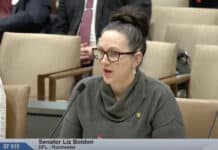It is no secret that high and increasing child care costs are becoming a big concern around Minnesota, especially rural areas. Parents on a regular basis in Minnesota as well as the rest of the country face high prices or lack of childcare providers. Current programs that have been in place to assist low income parents have failed to address the needs of these families.
High cost of childcare not only costs families money, but also presents loss to businesses as well as the rest of the economy. Work time lost by parents who take time off or exit the workplace altogether present significant amount of productivity lost. This would of course be solved with increased availability of affordable childcare services.
While the state has taken some action in addressing the childcare crisis, not much has been done to address shortage of child care providers. The recent proposals to expand financial assistance available for families to enroll in Early Learning programs is one of the examples. This proposal in a nutshell does nothing to lower the price of care or incentivize additional supply of services.
In as much as families face high prices, shortage of providers is becoming a much bigger issue due to the increased exit of family care centers. While Minnesota is one of the least affordable state for center based care, its family based care is one of the most affordable in the nation. One way to ease the burden of cost for families therefore would be to incentivize the entry of more family based care centers.
There are a lot of issues plaguing the childcare industry that will not be solved by merely increasing funding. For instance, providers have a hard time attracting and retaining workers due to low wages and stringent hiring qualifications. Providers furthermore continue to face increasing regulation due changes being made to comply with federal requirements.
Prices are indeed high, but to make them lower the state has to address issues leading to these high prices. These include but are not limited to regulations placed on supply. For in as long as new providers continue to exit at an irreplaceable rate, prices will remain high, services will still be scarce, and parents will have no use for these subsidies that keep on coming.


















